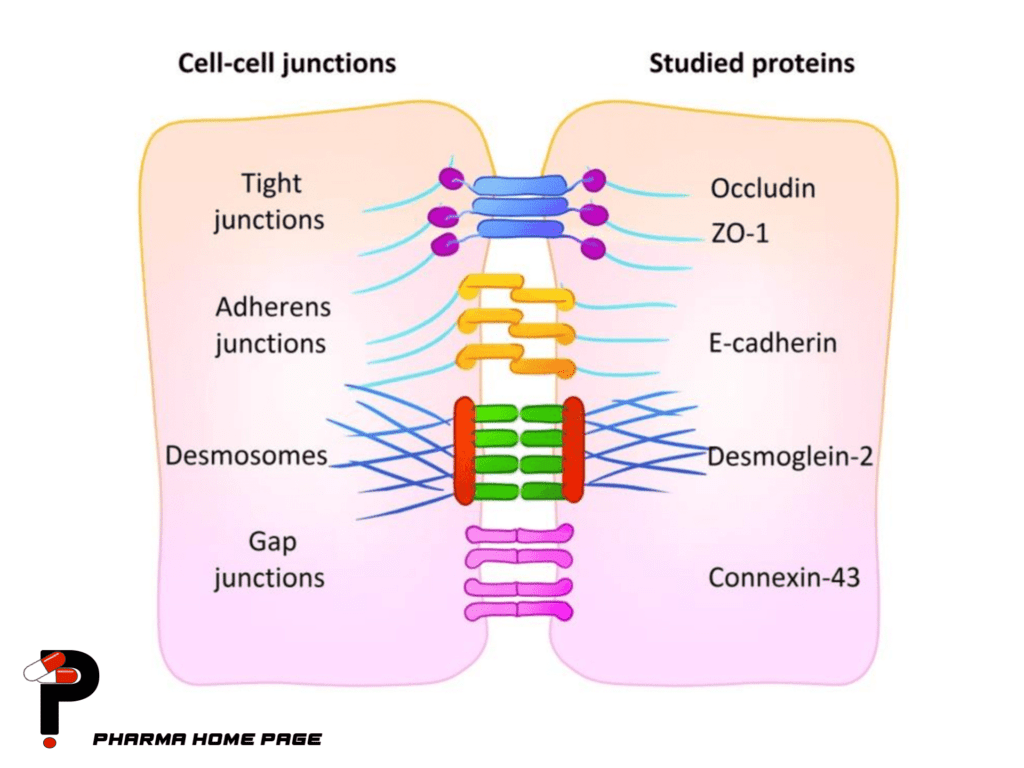Cell junctions are specialized structures that connect adjacent cells and allow them to communicate and interact with each other. There are three main types of cell junctions:
- Tight junctions: These are the most tightly sealed junctions, which form a continuous barrier between adjacent cells. Tight junctions are found in tissues that need to prevent the movement of molecules between cells, such as the epithelial lining of the digestive tract. Tight junctions consist of proteins that form a band around the cell, sealing the gap between cells.
- Gap junctions: These are channels that allow small molecules and ions to pass directly between adjacent cells. Gap junctions are found in tissues that need to coordinate the activity of cells, such as heart muscle cells. Gap junctions consist of proteins that form a channel connecting the cytoplasm of two adjacent cells.
- Desmosomes: These are spot-like junctions that anchor adjacent cells together, providing structural support and stability to tissues. Desmosomes are found in tissues that experience mechanical stress, such as skin and muscle tissue. Desmosomes consist of proteins that form a disc-like structure between cells, which is anchored to the cytoskeleton of each cell.

Cell junctions play a critical role in maintaining the integrity and function of tissues. Defects in cell junctions can lead to a variety of diseases and disorders, including autoimmune diseases, cancer, and developmental disorders. The study of cell junctions is an important area of research in cell biology, as it provides insights into how cells communicate and interact with each other in complex tissues and organ systems.
